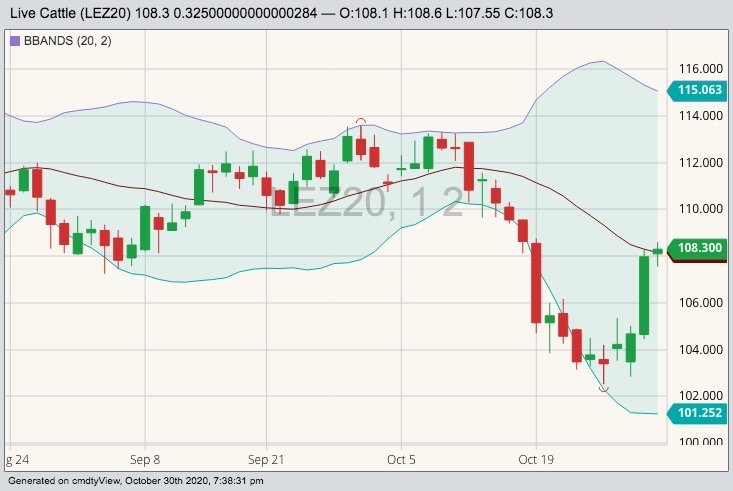Chicago | Reuters — U.S. live cattle futures closed higher on Friday for a fourth straight session, supported by follow-through technical buying after Thursday’s strong close and brisk demand for beef, analysts said.
But trading volume was thin as brokers waited for significant cash cattle trade to emerge. Fat cattle traded lightly in the southern Plains cash market this week at $106/cwt, the U.S. Department of Agriculture reported, steady with last week’s trades, but volume was limited (all figures US$).
Chicago Mercantile Exchange December live cattle futures settled up 0.325 cent at 108.3 cents/lb. Trading volume was estimated by the exchange at about 53,000 contracts, the lowest of the week.
Read Also

U.S. grains: Wheat futures rise on supply snags in top-exporter Russia
U.S. wheat futures closed higher on Thursday on concerns over the limited availability of supplies for export in Russia, analysts said.
CME January feeder cattle rose 2.775 cents to finish at 134.125 cents/lb.
“There is technical buying and good demand (for feeder cattle) from feedlots,” said Doug Houghton, analyst at Brock Capital Management. Harsh weather in the southern U.S. Plains this week may have lent support as well, he said.
Boxed beef prices inched higher on Friday, with choice cuts up 78 cents at $208.10/cwt and select cuts up a penny at $191.24, according to USDA data.
CME hog futures ended narrowly mixed, with the front two contracts drifting lower. Benchmark December lean hogs ended down 0.05 cent at 65.575 cents/lb.
“There is just a lot of demand uncertainty in that market,” Houghton said, particularly with regard to China, the world’s top pork consumer.
Traders have been hoping for increased sales of U.S. pork to China after China and other Asian buyers banned imports of German pork in September due to a deadly disease in wild boar. But China’s U.S. purchases have fallen short of some traders’ expectations.
China’s efforts to rebuild its own hog herd, the world’s largest, following a devastating outbreak of African swine fever, have been progressing “much more quickly than we thought,” Bunge CEO Greg Heckman said this week.
However, on Friday, Archer Daniels Midland CEO Juan Luciano said China’s rebuilding effort will “probably take a couple more years.”
— Julie Ingwersen is a Reuters commodities correspondent in Chicago.















